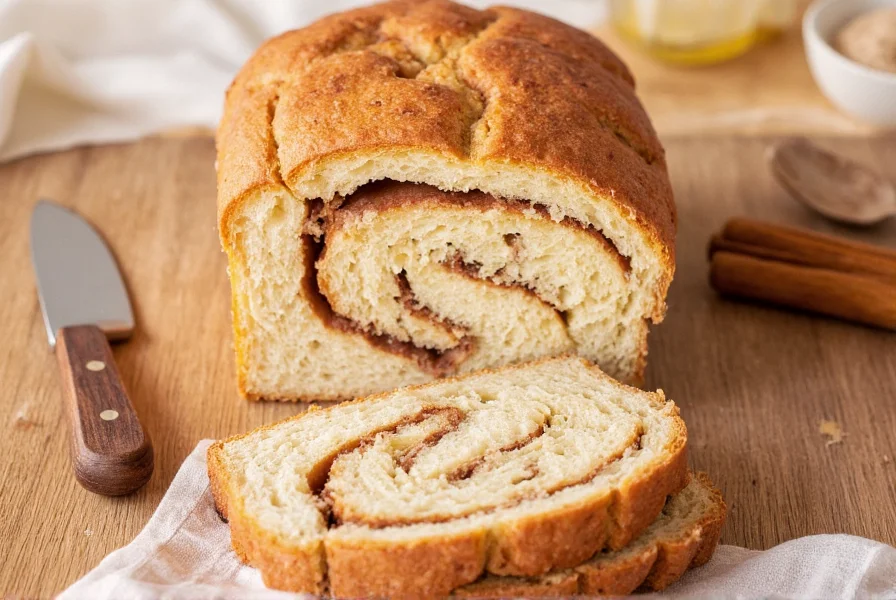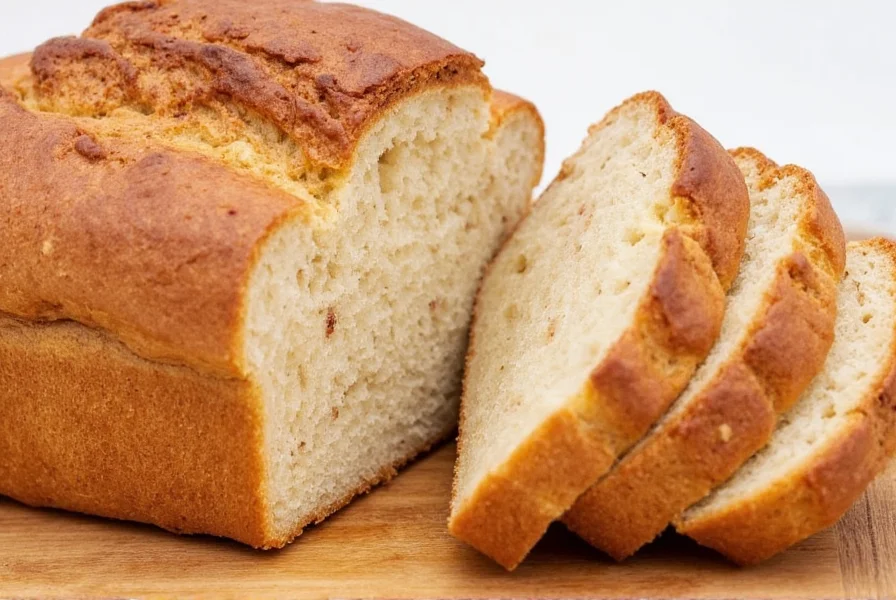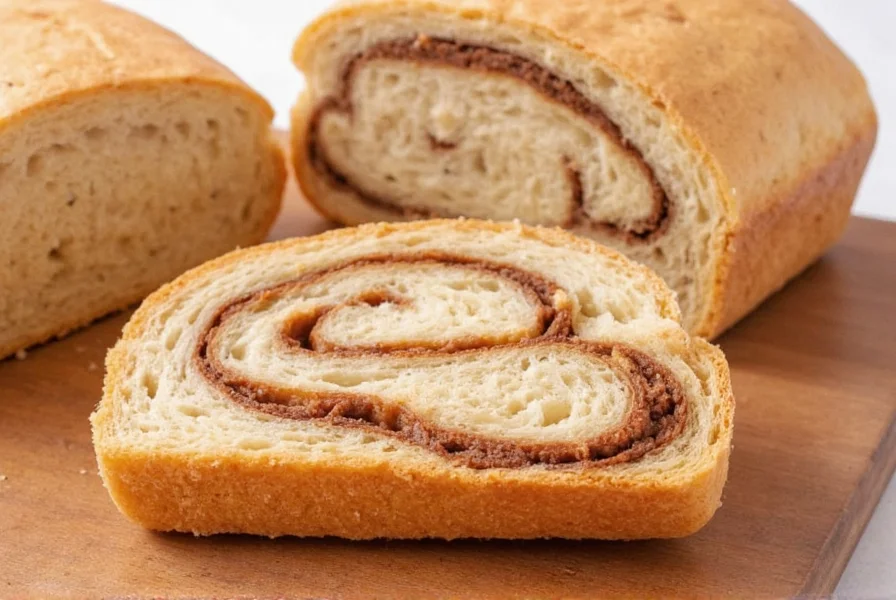For baking enthusiasts seeking an authentic experience, Amish cinnamon swirl bread represents a cherished tradition that blends simplicity with remarkable flavor. Unlike standard cinnamon breads, this specialty item relies on a unique preparation method that originated in Amish communities, where time-intensive processes were adapted to fit their lifestyle and values.
The Authentic Amish Approach
What distinguishes genuine Amish cinnamon swirl bread from ordinary versions is the traditional starter-based preparation. The authentic method begins with a sweet dough starter (sometimes called "Amish friendship bread starter") that ferments for 2-3 days before incorporation into the final dough. This extended fermentation develops complex flavors and creates the characteristic tender texture that defines this specialty bread.
Many modern recipes shortcut this process, but the traditional approach yields superior results. The starter typically contains flour, sugar, milk, and a small amount of yeast, allowed to culture at room temperature with daily feedings. This natural fermentation process creates subtle tanginess that balances the sweetness of the cinnamon filling.

Traditional Ingredients Breakdown
The ingredient list for authentic Amish cinnamon swirl bread remains deliberately simple, reflecting the community's values of using readily available pantry staples. No exotic ingredients are required—just quality basic components combined with care.
| Component | Traditional Ingredients | Purpose |
|---|---|---|
| Dough | All-purpose flour, sugar, butter, eggs, milk, yeast, salt | Creates tender, enriched bread base |
| Starter | Flour, sugar, milk, yeast | Develops flavor complexity through fermentation |
| Swirl | Brown sugar, cinnamon, melted butter | Creates signature spiral and spiced pockets |
Step-by-Step Preparation Guide
Creating authentic Amish cinnamon swirl bread requires patience but delivers exceptional results. Follow these steps for success:
- Prepare the starter (2-3 days ahead): Combine 1 cup flour, 1 cup sugar, 1 cup milk, and 1 teaspoon yeast. Cover loosely and let sit at room temperature, stirring daily. On day 3, use 1 cup of this starter for your bread and share the remainder with friends (a traditional Amish practice).
- Mix the dough: In a large bowl, combine the starter with 3 cups flour, 1/3 cup sugar, 2 eggs, 1/3 cup melted butter, 1/2 cup warm milk, and 1 teaspoon salt. Mix until a shaggy dough forms.
- First rise: Cover and let rise in a warm place until doubled (about 1.5-2 hours).
- Roll and swirl: On a floured surface, roll the dough into a 16x12 inch rectangle. Brush with melted butter, then sprinkle with 1 cup brown sugar and 3 tablespoons cinnamon mixed together. Starting from the long side, roll tightly into a log.
- Shape and second rise: Place seam-side down in a greased loaf pan. Cover and let rise until nearly doubled (1-1.5 hours).
- Bake: At 350°F (175°C) for 35-40 minutes, until golden brown and internal temperature reaches 190°F (88°C).
Common Challenges and Solutions
Even experienced bakers encounter issues with cinnamon swirl bread. Understanding these common problems will help you achieve perfect results every time:
- Swirl separation: When the filling leaks out during baking, it's usually because too much butter was used or the dough wasn't rolled tightly enough. Use melted butter sparingly when applying the filling and roll firmly but gently.
- Dense texture: This typically occurs when too much flour is incorporated during kneading or rolling. Measure flour carefully using the spoon-and-level method rather than scooping directly from the bag.
- Collapsed swirl: If your beautiful spiral disappears after baking, the dough likely over-proofed during the final rise. Watch carefully and bake when the dough has risen about 1 inch above the pan rim.

Variations Worth Trying
While traditional Amish cinnamon swirl bread remains beloved, several thoughtful variations can enhance your baking experience:
- Nut enhancement: Add 1/2 cup finely chopped pecans or walnuts to the cinnamon-sugar mixture for added texture and flavor complexity
- Fruit infusion: Sprinkle 1/4 cup dried apples or raisins over the filling before rolling for a delightful fruity dimension
- Spice variation: Incorporate 1/2 teaspoon cardamom or nutmeg with the cinnamon for a more complex spice profile
- Glaze finish: After cooling, drizzle with a simple powdered sugar glaze (1 cup powdered sugar + 2 tablespoons milk) for added sweetness
Storage and Serving Recommendations
Amish cinnamon swirl bread is best enjoyed fresh but can be stored properly for continued enjoyment. For optimal freshness, wrap completely cooled bread in plastic wrap and store at room temperature for up to 3 days. For longer storage, slice the bread before freezing in an airtight container—this allows you to thaw individual slices as needed.
When serving, slightly warm slices in a toaster oven for the best texture and aroma release. This bread makes an exceptional breakfast item, but also serves beautifully as a dessert with a scoop of vanilla ice cream or alongside a cup of coffee for an afternoon treat.
Frequently Asked Questions
What makes Amish cinnamon swirl bread different from regular cinnamon bread?
Authentic Amish cinnamon swirl bread uses a multi-day starter process that develops complex flavors through natural fermentation. The traditional method creates a more tender crumb and distinctive flavor profile compared to standard cinnamon breads that use instant yeast and single-rise methods.
Can I make Amish cinnamon swirl bread without a starter?
Yes, but the results won't be authentic. Many modern recipes substitute the starter with additional yeast and sugar, creating a quicker version. While tasty, these shortcut methods miss the subtle flavor complexity that develops through the traditional starter fermentation process. For true Amish-style bread, the starter is essential.
Why does my cinnamon swirl bread collapse after baking?
Collapse typically occurs when the dough over-proofs during the final rise. The yeast exhausts its food supply, causing the structure to weaken. To prevent this, watch the dough carefully during the final rise—bake when it has risen about 1 inch above the pan rim, not when it doubles. Also ensure your yeast is fresh and active but not excessive.
How can I get a more defined swirl pattern in my bread?
For a more pronounced swirl, roll the dough tightly but gently after applying the filling. Use a bench scraper to help lift and roll the dough without tearing. When slicing the cooled loaf, use a serrated knife with a gentle sawing motion to maintain the spiral pattern without compressing the bread.











 浙公网安备
33010002000092号
浙公网安备
33010002000092号 浙B2-20120091-4
浙B2-20120091-4